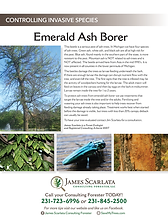
Tree Defend Instructional Video
Tree Defend MACRO Injector Video

TESTIMONIALS
“Solid, so easy to setup, load and clean.”
Tom Ingersoll / Ingersoll Land Care, Sheffield, Massachusetts
“I absolutely love it! I can easily add more valves to inject larger trees. The pump-bottle works awesome and the brass ball valves are very durable and easy to use. Well worth the money.”
David Doepner / St. Paul, Minnesota
“I like fast clean-up and the Tree Defend definitely offers faster clean-up and far less maintenance issues than other injectors that I have used. Another advantage is that you will save 50¢ each drill site by not having to use plugs, plus the drill hole is smaller allowing the tree to seal over the hole quickly.”
Jeff Harris / Arbor Rangers, LLC, Indianapolis, Indiana
“The ability to work on bigger trees, use large volumes of solution, reuse the injector tubes, expand easily and inexpensively and distribute to more injection sites make this system superior.”
Jon Stauffer / Owner of Majestic Tree Care Specialists, DeWitt, Michigan
“They are easy to use, quick set-up. I like that they are
all in one unit (no extra pump or other parts).”
Sean Riley / Terebinth Tree Care, Indianapolis, Indiana
“The Tree Defend is better because it is designed by the
people who have to use it”
Steve Turner / Arboricultural Services, Fenton, Michigan

ABOUT TREE DEFEND
Our Trees are Under Increasing Pest and Disease Pressure
The Tree Defend® Injector is a tool to deliver nutrients, hormones, or pesticides directly into the vascular tissue of trees for control of tree diseases or nutrient deficiency.
As a forest ecologist and arborist, I am often called upon to treat invasive tree pests and diseases. Michigan forests have been invaded with oak wilt, emerald ash borer, and many more exotic diseases and pests through the years. Arborists and foresters all over North America need tools they can rely on to fight these invasive pests that are destroying our forests.
Tree Defend® is a result of my frustration with other injection tools on the market. I have often been hired to treat scores or hundreds of trees at a single property, and I needed an injection system that was simple to set up, easy to clean and maintain, and would perform through job after job.
I know the hard work you put into providing quality tree care for your clients. You can’t afford to have your equipment let you down. Those O-Rings that you keep replacing in your old injector may not be an expensive part, but when you have to replace them at a job site, it becomes a big deal. That’s why I have designed a durable and easy-to-maintain tree injection system capable of withstanding high production work. We at Tree Defend® are here to help you save your trees.
Jim Scarlata


The Advantages of
Tree Defend Tree Injectors
-
The system is expandable and customizable.
-
No plastic left in the tree.
-
The linear design of the manifolds allows you to reach around large trees.
-
Our system enables you to purchase chemicals in bulk, which is more cost-effective.
-
Tree Defend reservoir and pump have Viton seals for durability.
-
Our system comes with high-quality linear valves that prevent clogging.
-
Large injector tubes significantly reduce clogging.
-
Reusable, no disposable parts to buy.
-
The whole system is compact.
-
Compatible with a wide range of chemicals.
-
Simple and easy to use.
-
Easy to maintain.
-
Lever ball valves allow you to know at a glance whether valves are open or closed.
-
Built-in pressure gauge lets you know the pressure at a glance.
-
Machined brass injector tube seats in the ¼-inch hole – use commonly available ¼-inch brad-point drill bits.
-
The pump is integrated into the reservoir, with no extra pump or compressor to carry around.
-
Our Macro Tubing is interchangeable with our Standard Tubing and can be used together.
-
Made in the U.S.A.
-
1 Year Warranty.

TREE INJECTION PRINCIPLES
How it works
Solutions can be injected into the xylem (the water-conducting vessels within the wood) because the pressure inside of the xylem is less than the atmospheric pressure. This is due to water being lost from the canopy to the air, causing negative pressure in the xylem. This negative pressure draws sap up from the roots. An exception to this is in late winter and early spring when the buds are expanding. At this time sap is actually being forced upward from the roots to promote the expansion of buds. This is when trees are tapped to gather sap for making sugar and syrup.
Injection into the trunk of a tree works best when the canopy is fully leafed out. It can still be done in the Fall, although the rate of uptake will be slower. During the summer the rate of uptake can vary with the health of the tree, soil moisture, and weather conditions. Higher temperatures and wind will increase water loss from the canopy and the rate uptake will be faster. Trees may shut down stomata (pores on the leaves) during drought conditions, so this would decrease the rate of uptake. Vigorous trees often have larger growth rings, which means larger xylem vessels that can move sap and injected solutions faster.
Why inject instead of other methods of application?
Injection places the solution directly into the tree. This eliminates concerns of overspray or drift from spray applications. It also reduces the risk of groundwater contamination. At some properties, tree injection may be the only treatment option due to proximity to water or other sensitive areas.
Less material is used when injecting. By placing the material directly inside of the tree, less of it is lost to run-off, drift, or evaporation. Pesticides reach an effective dose in the plant quickly and often protect the tree longer when injected as the material inside of the tree is not exposed to rain that could cause run-off or sunlight that could break it down.
Some diseases such as oak wilt or Dutch elm disease can not be effectively treated by spraying. These fungi grow inside of the xylem and injection puts the fungicide where it is needed.
Tips for trunk injection of trees
To get the solution into the xylem it is necessary to drill through the bark and a short distance into the wood. It is not necessary to drill deep into the trunk as most of the sap movement is in the outer growth rings.
The fastest-growing part of the trunk is where the buttress roots flare out from the base. Since this is the fastest-growing area, the xylem vessels will be the largest there. Injecting into the buttress flares usually results in the best uptake. Since this is the fastest growing area of the trunk the holes drilled here will heal faster than holes drilled higher up. We use ¼ diameter drill bits with our Tree Defend Injectors and it is often difficult to see where the holes were drilled after a couple of growing seasons.
Since the pressure inside of the xylem is less than the atmosphere once the trees have leafed out, you don’t need high pressure to get the solution into the tree. We usually have good uptake with only 15 to 25 psi. The negative pressure inside the xylem also prevents the solution from running back out of the holes. It is being drawn into the tree.
When dealing with oak wilt I advise sealing the drilled holes with an appropriate wound dressing to prevent beetles from accessing the holes. With other species, I advise leaving the holes to air dry and close naturally as the tree grows.
What conditions can be treated by injection?
Tree injection has been used to treat a wide variety of insects, mites, fungi, bacteria, and other diseases. Injections can be especially useful in the treatment of borers such as emerald ash borer, bronze birch borer, and bark beetles since these insects feed underneath the bark. The injection is often relied upon for the control and prevention of Dutch elm disease and the prevention of root transmission of oak wilt. Phytoplasma diseases such as lethal palm yellows are controlled using injections of tetracycline solutions. It can also be used to administer nutrients, hormones or bio-stimulants to correct nutrient deficiencies or support trees stressed due to environmental conditions.
Tree injection has been an important tool for arborists and foresters for some time. As concerns about the environmental effects of other application methods emerge and new pests and diseases spread the importance of tree injection will continue or increase.

FREQUENTLY ASKED QUESTIONS
How do you clean the Tree Defend injector?
In between the injection of each tree, clean the drill bit, and injector tubes by either spraying or dipping them with peroxide or another disinfectant. We use a container filled with alcohol and peroxide to put the injector tubes into after removing them from the tree.
At the end of the day or when switching chemicals, clean the reservoir, tubing, and valves by running water through the system. Adding a small amount of alcohol will aid in removing the thicker chemical residues.
Do the injection holes need to be sealed after the injection?
When injecting for Oak Wilt, yes, but with any other type of tree, you don't need to seal the wound. Just as with pruning cuts, wound dressings can stimulate rot by trapping moisture behind the dressing.
Injection sites on an oak tree should be sealed to prevent the beetles that carry Oak Wilt spores from accessing the wound. We use natural clay because it allows the wound to dry out more naturally. It is easy, faster, and less messy than other sealants we've tried. Keep the clay moist by storing it in a container or bag so air cannot dry it out. You can purchase natural potters clay at any art supply store.




















